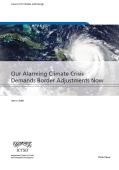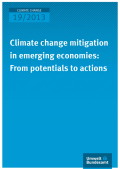The transition to a low carbon economy is a capital-intensive process requiring large-scale finance of suitable low-carbon investment programmes. This policy brief, Securing Macro-economic Gains from Decarbonisation Investment, examines the trends driving long-term investing in low-carbon development. This challenge is linked to the expansion of efficient (e.g. low cost) private finance for capital-intensive low-carbon assets, on both the supply (financial structures) and demand side (energy technologies and policies) of investment decisions. Different policies in place and country risk profiles determine the wide variation of investments’ rate of returns across markets and sectors. In 2016, the range of financing costs in the ‘green and renewables’ sector varies from 3.4 % in Germany to 8 % or more in Greece and many emerging markets, reflecting perceived risks associated with these countries and their relevant energy-climate policies.




The report Investing in a Green Belt and Road? Assessing the Implementation of China’s Green Credit Guidelines Abroad examines seven case studies to assess Chinese's banks' compliance with the China's Green Credit Guidelines (GCG) in their overseas lending practices. In light of China's wide-reaching Belt and Road Initiative (BRI), case studies were selected from BRI related countries, including Afghanistan, Indonesia, Kenya, Russia, India, and Sri Lanka. These examples span across the pulp and paper, mining, energy, and infrastructure sectors. This report evaluates Chinese banks' implementation of the GCG based on the ChinaBanking RegulatoryCommission' s official Key Performance Indicators for green credit, which were published in 2014.
